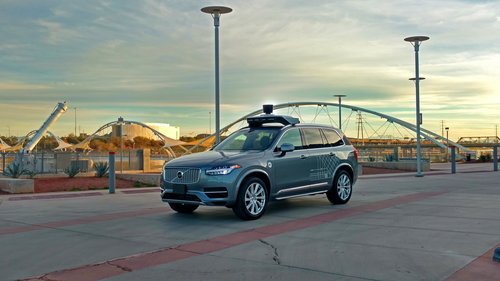Waymo Autonomous Test Locations
If various tech billionaires are to be believed, the future of vehicles is electric and autonomous so none of us idiot humans can continue getting behind the wheel and killing one another. The problem is though, we idiot humans aren’t exactly totally on board with that whole giving up driving thing.
In the wake of several high profile stories about people dying in cars driven by half-baked and implemented-too-early autonomous systems, public fear of autonomous vehicles has grown precipitously, up to 73% of a recent AAA survey. Demographic wise, the biggest jump was in people ages 20 to 37, going from 49% afraid to 64%, while still being the age group most inclined to ride in self-driving cars. Women in particular are scared, with 83% saying they don’t want to ride in autonomous vehicles and a whopping 70% saying they don’t even want to share the road with them. Elon Musk will blame this on negative coverage of fatal wrecks involving autonomous tech. Journalists and safety pundits will blame it on companies rushing out technology that isn’t ready for mass consumption. The truth is, they’re both right, but only the latter led to the former, and although autonomous vehicles may end up being safer than humans, they have to prove it first. As Uber suspends its autonomous testing in Arizona (costing 300 people their jobs, by the way) and others scale back plans to launch driverless cars on roadways, it looks like there’s a ways to go yet.
Source: Tim Stevens/Roadshow
And just this week they didn’t do such a great job proving it. On a drive with journalists in Jerusalem, a Ford Fusion run by LiDAR makers MobilEye, blew through a red light during a presentation of the technology, completely ignoring the signal. Fortunately, there were no collisions and everyone is okay, but it brings to mind Uber’s incident where their autonomous Volvo failed to react to a pedestrian. MobilEye claims their cameras saw the red light, but that the electromagnetic interference from the broadcasting equipment used by the TV crew in the car screwed with the signal from the traffic light transponder, and the transponder signals trumped the cameras, so the car cruised right on through. CEO Amnon Shashua said, “It was a very unique situation, we’d never anticipated something like this,” which is exactly the problem with autonomous technology. There’s no possible way to anticipate all eventualities, so these self driving cars will never be 100 percent safe. The company claims to have fixed the issue but wouldn’t go into just how.
Karen Kasler/Ohio Public Radio
Despite all of this, the morons in Ohio have stated publicly their desire to become the “wild, wild west for self driving car testing.” And in case you think I’m kidding, those were Governor John Kasich’s exact words. For those wanting some more words from the governor, he also said “Computers do not comb their hair. Computers do not text. Computers do not talk on cellphones, and this technology, which is going to be the 21st century technology, is going to save lives.” Yeah, right up until while not texting, combing hair or talking, a computer ignores a red light and t-bones someone to death. Not only is Ohio allowing self-driving cars while other states that have done so are reevaluating their programs, they’re allowing autonomous vehicles without humans in them! Though, a licensed driver does need to monitor the vehicle remotely and be able to avoid accidents in case of system failure. This, to me, smacks of a government that has no idea what it’s doing and is grasping at straws for a way to bring some sort of investment into the state. Sorry, Ohio, but this was really short-sighted, poorly planned and idiotic.
In neighboring Pennsylvania, Uber announced they would resume testing their autonomous vehicles on the streets of Pittsburgh despite the Arizona closure, which was I’m sure very fun for Pittsburgh’s Mayor William Peduto to find out about via Twitter. After the fatal crash in Tempe, Mayor Peduto suspended Uber’s right to test, pending the completion of a federal investigation and that they would discuss how to safely resume after that. The city has outlined several changes Uber must make to continue testing, including limiting speed to 25 miles per hour, which the company is apparently fine with, and they say they met with the city several weeks ago to discuss picking up where they left off. But when the one last thing on your to-do list is “call the mayor,” you may want to get that checked off before hyping yourself on social media.
Oh, and speaking of that federal investigation? There’s some news on that, with the National Transportation Safety Board stating that the self-driving Volvo Uber in Tempe recognized both the pedestrian and bicycle she was carrying and had a full six seconds to react, but instead the system did nothing, not interpreting the woman as, you know, a human. Even at 1.3 seconds before impact, the Volvo safety systems determined emergency braking was needed to avoid hitting the woman, but Uber had disabled their systems so it didn’t interfere with theirs. The NTSB study hasn’t been concluded yet though, and they haven’t settled on a probable cause, so I’m not sure why Uber thinks this meets with Pittsburgh’s Mayor’s “completed federal investigation” ultimatum.
Meanwhile in Norway, the land of my ancestors, a company called Kolumbus has decided the future of buses is now and they will begin rolling out completely autonomous EasyMile EZ10 buses, which accommodate 15 passengers and can reach a blistering 28 miles per hour. Except they won’t be completely autonomous because Norway doesn’t permit fully autonomous vehicles on the road, so each bus will also feature a safety driver. Oh and also the buses won’t be hitting that 28 mile per hour max speed because Norway will require the bus to be limited to just 7.5 miles per hour. Oh and the buses won’t be filled to the brim with 15 passengers because Norway will require the company to haul only six people at a time. But starting in June, those six riders per bus will I’m sure have a great time speaking to their driver and watching casual runners fly by them along their route.
Authored by
Devlin Riggs














